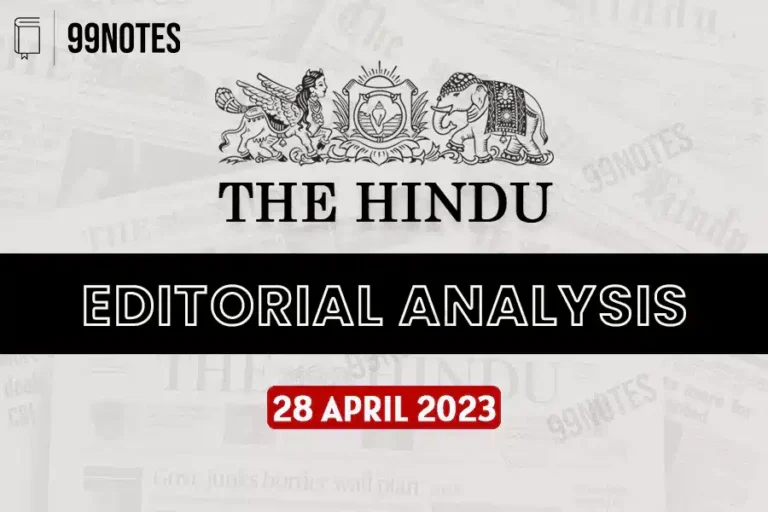16 September 2024 : The Hindu Editorial Analysis
1. A human touch to India’s mineral ecosystem
(Source – The Hindu, International Edition – Page No. – 8)
| Topic: GS3 – Indian Economy |
| Context |
|
Judicial Focus on Coal Block Allocation and the Birth of DMF
- In 2014, the judiciary spotlighted coal block allotments following the 2012 Comptroller and Auditor General (CAG) report, which scrutinised coal allocations from 2004 to 2009.
- In 2015, the central government amended the Mines and Minerals (Development and Regulation) Act, introducing mandatory auctions for mining licences.
- This legislation also created the District Mineral Foundation (DMF), funded by contributions from licensees and leaseholders.
- DMF was a result of the government’s belief that local communities are vital stakeholders in resource-driven development.
The DMF Transformation Over the Decade
- Over 10 years, DMF has accumulated nearly ₹1 lakh crore, enabling community-centric development in mining-affected areas.
- The Pradhan Mantri Khanij Kshetra Kalyan Yojana (PMKKKY), marking its tenth year on September 16, has transformed mineral wealth into development lifelines in these regions.
- 645 districts across 23 States have benefited from three lakh projects under the DMF, significantly improving livelihoods and reducing mining impacts.
Success Stories and Innovations
- DMFs have empowered local communities, such as women in Odisha’s self-help groups who are becoming entrepreneurs.
- In Katni, Madhya Pradesh, young minds are mastering drone technology with DMF support, leading to employment opportunities.
- The DMF’s role complements India’s broader strategy, including the National Critical Minerals Mission and Khanij Bidesh India Ltd. (KABIL), aiming to secure critical minerals and enhance global presence.
Governance and Transparency
- DMFs are governed at the district level, with District Collectors ensuring funds are used where they are most needed.
- The National DMF Portal improves transparency and efficiency, digitising DMF operations across India.
- DMFs work hand in hand with the district administration to enhance socio-economic development and human development indicators.
Innovation and Best Practices Across DMFs
- Every DMF tailors initiatives to local challenges, promoting inclusivity by involving elected representatives and gram sabha members in governing bodies.
- Some DMFs have established engineering departments and involved personnel from the State Public Works Department for better project execution.
- A three-year planning strategy ensures long-term, well-planned projects, moving away from fragmented approaches.
Convergence with Central and State Schemes
- DMFs are integrating their activities with existing central and State schemes, particularly in aspirational districts, to achieve the Sustainable Development Goals (SDGs).
- Initiatives are focused on livelihood enhancement for forest dwellers, including projects in plantation, medicinal herb processing, and rural athlete development.
- DMFs serve as microcosms of the ‘whole of government’ approach, enhancing the impact of various government schemes at the grassroots level.
Cooperative Federalism and Inclusive Governance
- DMFs exemplify cooperative federalism, converging central and State initiatives to align national priorities with local needs.
- This alignment at three levels of governance ensures inclusive governance and maximises the reach of development initiatives.
- By tapping into mineral wealth, DMFs are transforming historically underserved regions, setting a global example of balancing economic growth with social welfare and rights.
Conclusion
- India is not only empowering marginalised communities but also leading the world in responsible resource management.
- DMFs are reshaping how mineral resources are utilised, focusing on community welfare and sustainable development, showcasing a model for inclusive growth.
| Practice Question: Discuss the role of the District Mineral Foundation (DMF) in promoting community-centric development in mining-affected regions. How has the DMF transformed resource management in India? Highlight the challenges and opportunities in its implementation (150 Words /10 marks) |
2. Realising the rural-urban continuum
(Source – The Hindu, International Edition – Page No. – 9)
| Topic: GS1 – Indian Society – Urbanization |
| Context |
|
India’s Urban Century and the Urban-Rural Continuum
- India is experiencing significant demographic shifts, with the country moving towards becoming more urban than rural.
- These changes are taking place not only in major urban centres but also in Tier II and Tier III cities and their peripheries.
- However, India still addresses challenges through a rural-urban dichotomy, which overlooks the interconnectedness of urban and rural areas, especially in expanding peri-urban regions.
Over-Centralisation and Financial Constraints
- Recent years have seen an over-centralisation of finances, undermining the autonomy of local bodies and leading to financial suffocation.
- The 13th Finance Commission raised concerns about the growing financial constraints for local governments, pointing to the tied nature of grants linked to centrally sponsored schemes.
- An example is the relationship between property taxes in cities and the State Goods and Services Tax, which, if not aligned, risks towns losing untied financial grants.
Urban Programmes Missing the Continuum
- Flagship programmes such as Swachh Bharat Mission and Atal Mission for Rejuvenation and Urban Transformation (AMRUT) do not address the urban-rural continuum.
- AMRUT was originally designed to fund liquid waste management in 500 cities and has since expanded to statutory towns, but many urban villages and census towns remain excluded.
- The peri-urban regions and urban villages, which house large migrant and informal worker populations, are left out of urban infrastructure planning despite their proximity to statutory towns.
- This rigid urban-rural categorisation fails to reflect the interconnected nature of waste flow between cities and peri-urban areas, leaving funding gaps for necessary infrastructure projects.
Fragmentation in Waste Management Programmes
- AMRUT does not cover solid waste management, which falls under the Swachh Bharat Mission (SBM).
- SBM-Urban focuses on making cities garbage-free, while SBM-Rural maintains open defecation-free status and addresses solid and liquid waste management.
- Although both aim for similar outcomes, they operate separately, with no collaborative infrastructure for solid waste management, even in contiguous rural and urban regions.
Potential for Collaborative Infrastructure
- Collaborative infrastructure for solid and liquid waste management at the district or regional levels could yield better results.
- Greater liberty and autonomy for local governments to integrate waste management systems across rural and urban areas would improve governance and project outcomes, moving away from a centralised, top-down approach.
Revisiting Governance Models
- The 73rd and 74th Constitutional Amendments created a governance framework combining Zila Panchayats and urban local bodies, but this needs to be revisited and strengthened.
- The District Planning Committees were originally intended to play a central role in decision-making, with the district bureaucracy being subordinate to these bodies. However, in practice, this relationship has reversed in many States.
- Strengthening District Planning Committees could help address the challenge of the urban-rural continuum by giving local governments a greater role in planning and implementation.
Kerala’s Example of Integrated Governance
- In Kerala, both urban and rural local bodies fall under the Ministry of Local Self-Governments, allowing for more integrated governance.
- For example, a proposed solid waste landfill site on the town’s periphery was quickly withdrawn due to public pressure, a result of the ministry’s coordinated governance approach.
- This contrasts with other States, where such decisions are delayed due to the separation of urban and rural governance frameworks.
Conclusion
- India’s urban-rural continuum necessitates interventions in both infrastructure and governance to meet the demands of rapid urbanisation.
- The existing model of separate urban and rural bodies is outdated, and there is a need for financial and resource planning to reflect the interconnected nature of these areas.
- Allowing for joint, imaginative planning across urban and rural areas will ensure that governance and development strategies are better suited to India’s evolving demographic landscape.
| PYQ: With a brief background of quality of urban life in India, introduce the objectives and strategy of the ‘Smart City Programme’ (200 words/12.5m) (UPSC CSE (M) GS-1 2016) |
| Practice Question: How can India address the challenges posed by the urban-rural continuum in governance and infrastructure planning? (150 Words /10 marks) |




